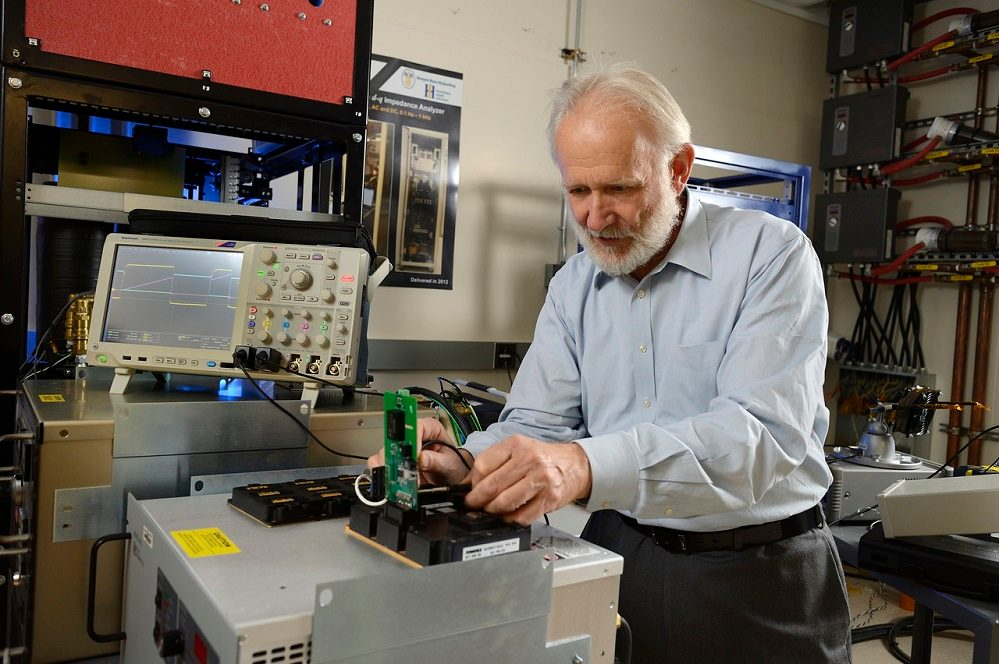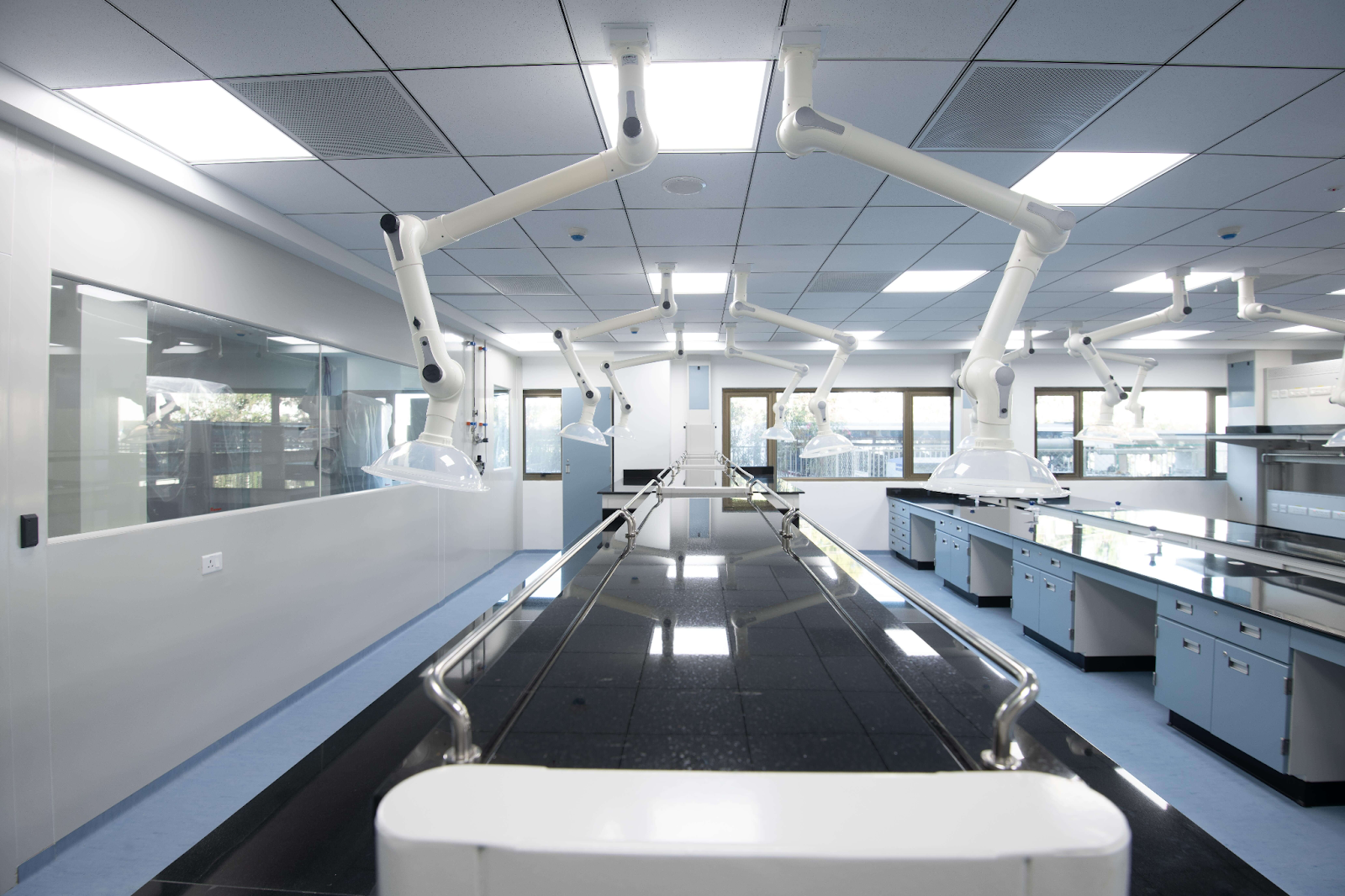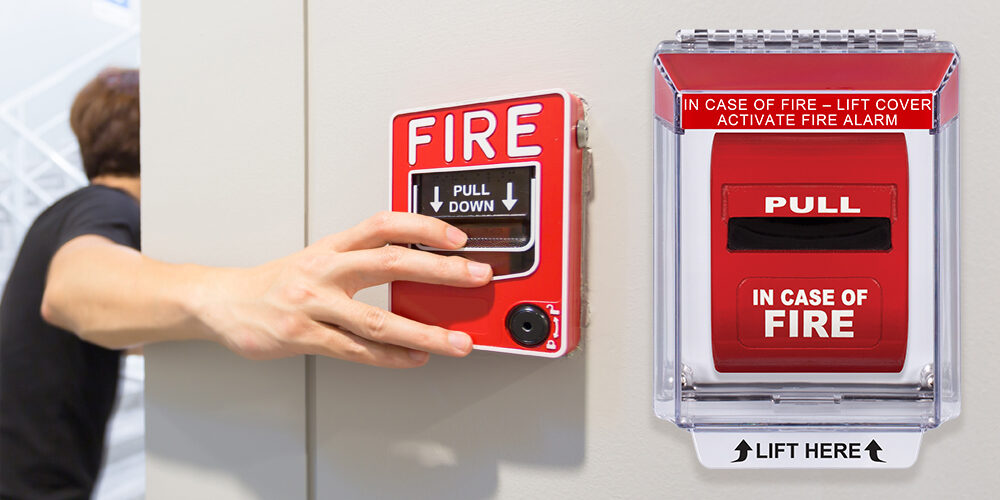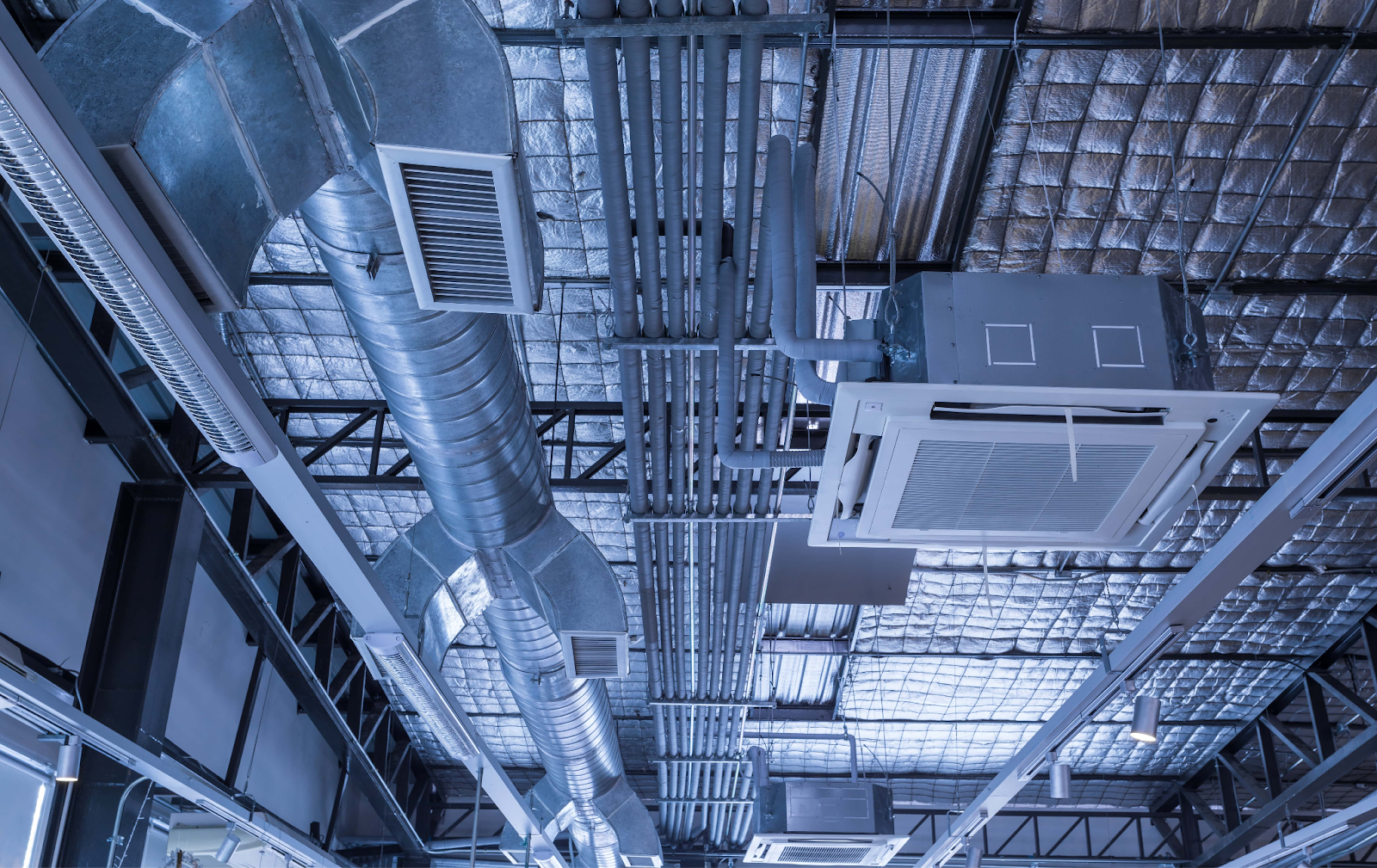Resolving wiring and grounding issues

Electrical Systems: A Foundation for Safe and Reliable Laboratory Operations

The laboratory environment, a crucible of scientific discovery and technological advancement, relies heavily on a robust and dependable electrical infrastructure. From powering sophisticated analytical instruments to supporting intricate experiments, electrical systems are the lifeblood of modern laboratories. However, the very nature of scientific exploration often involves working with sensitive equipment, hazardous materials, and complex processes, making electrical safety a paramount concern. A single electrical malfunction can disrupt research, compromise data integrity, and even pose a serious threat to personnel safety.
The intricate web of electrical wiring, grounding systems, and power distribution networks within a laboratory must be meticulously designed, installed, and maintained to ensure optimal performance and unwavering safety. This article delves into the critical aspects of electrical systems in laboratories, exploring the potential hazards associated with faulty wiring and inadequate grounding, and providing practical insights into resolving these issues. By understanding the principles of electrical safety and implementing best practices, laboratory professionals can create a secure and reliable environment for conducting research and fostering innovation.
The importance of a well-maintained electrical system in a laboratory cannot be overstated. It is the foundation upon which the entire research enterprise rests. A reliable electrical infrastructure ensures the smooth operation of essential equipment, prevents costly downtime, and safeguards the health and well-being of laboratory personnel. However, the complex nature of laboratory operations, involving a wide range of equipment, chemicals, and procedures, presents unique challenges in maintaining electrical safety. Faulty wiring, inadequate grounding, and improper use of electrical devices can lead to a cascade of problems, ranging from minor disruptions to catastrophic events.
The consequences of electrical failures in a laboratory can be far-reaching. A simple short circuit in a power outlet can disable a critical piece of equipment, halting research progress and incurring significant financial losses. In extreme cases, electrical malfunctions can ignite fires, release hazardous chemicals, or even cause electrocution, posing a serious threat to human life. Therefore, it is imperative for laboratory managers and technicians to prioritize electrical safety and implement comprehensive measures to mitigate risks.
This article aims to provide a comprehensive guide to resolving wiring and grounding issues in laboratories. It will explore the fundamental principles of electrical safety, identify common causes of electrical problems, and offer practical solutions for addressing these issues. By understanding the intricacies of electrical systems and implementing best practices, laboratory professionals can create a safe and reliable environment for conducting research and fostering innovation.
The article will delve into the following key areas:
- Understanding Electrical Safety Principles: This section will provide a foundational understanding of electrical safety concepts, including voltage, current, resistance, grounding, and the importance of proper wiring practices.
- Identifying Common Electrical Hazards in Laboratories: This section will explore the most prevalent electrical hazards encountered in laboratory settings, such as faulty wiring, inadequate grounding, overloaded circuits, and improper use of electrical equipment.
- Troubleshooting Electrical Issues: This section will provide practical guidance on identifying and resolving common electrical problems, including troubleshooting techniques, diagnostic tools, and safety precautions.
- Implementing Best Practices for Electrical Safety: This section will outline essential best practices for maintaining electrical safety in laboratories, including regular inspections, preventative maintenance, and employee training programs.
By addressing these key areas, this article will empower laboratory professionals with the knowledge and tools necessary to ensure a safe and reliable electrical environment for their research endeavors.
Resolving Wiring and Grounding Issues in Laboratory Environments
In the realm of scientific research, laboratories serve as the bedrock of innovation, where meticulous experiments and precise measurements drive groundbreaking discoveries. However, the intricate interplay of sophisticated equipment, sensitive instruments, and complex electrical systems necessitates a robust and reliable infrastructure to ensure the integrity and safety of operations. Among the critical aspects of this infrastructure, proper wiring and grounding play a pivotal role in safeguarding both personnel and equipment, while maintaining the accuracy and reproducibility of experimental results.
Electrical systems, the lifeblood of any laboratory, are responsible for powering a wide array of equipment, from microscopes and centrifuges to analytical instruments and computers. These systems are typically designed to meet the specific demands of the laboratory's research activities, ensuring adequate power supply, voltage stability, and protection against electrical hazards. However, the complex nature of laboratory environments, with their intricate network of wires, cables, and electrical components, can create vulnerabilities that can lead to wiring and grounding issues. These issues, if left unaddressed, can have far-reaching consequences, ranging from equipment malfunctions and data inaccuracies to electrical shocks and fire hazards.
Understanding the Importance of Proper Wiring and Grounding
Proper wiring and grounding are essential for the safe and reliable operation of laboratory equipment. Wiring refers to the physical connections between electrical components, ensuring that power flows efficiently and safely throughout the laboratory. Grounding, on the other hand, provides a path for stray electrical currents to flow safely to the earth, preventing electrical shocks and equipment damage. In essence, grounding acts as a safety net, diverting potentially dangerous currents away from personnel and equipment.
The significance of proper wiring and grounding in laboratory environments cannot be overstated. It is a cornerstone of electrical safety, ensuring that electrical currents are channeled appropriately, minimizing the risk of electrical shocks and fires. Furthermore, proper grounding is crucial for the accurate and reliable operation of sensitive laboratory equipment. Grounding helps to eliminate electrical noise and interference, which can distort measurements and compromise experimental results. In essence, proper wiring and grounding are essential for maintaining the integrity of scientific data and ensuring the safety of laboratory personnel.
Common Wiring and Grounding Issues in Laboratories
While proper wiring and grounding are essential for laboratory safety and operational integrity, various factors can contribute to wiring and grounding issues. These issues can arise from a combination of factors, including improper installation, aging infrastructure, environmental factors, and even human error. Understanding the common causes of these issues is crucial for effective troubleshooting and preventative measures.
1. Improper Installation
Improper installation is a leading cause of wiring and grounding issues in laboratories. This can occur during the initial construction or renovation of the laboratory, or during the installation of new equipment. Common errors include:
- Incorrect wire gauge: Using wires that are too thin for the intended current load can lead to overheating and potential fire hazards. Conversely, using wires that are too thick can create unnecessary bulk and hinder airflow, potentially leading to overheating.
- Loose connections: Loose connections can create resistance, leading to voltage drops, overheating, and potential fire hazards. They can also introduce electrical noise and interference, affecting the accuracy of sensitive equipment.
- Improper grounding: Inadequate grounding can create a pathway for stray electrical currents to flow through equipment and personnel, increasing the risk of electrical shocks and equipment damage.
- Overloading circuits: Connecting too many devices to a single circuit can overload it, leading to overheating, blown fuses, and potential fire hazards.
2. Aging Infrastructure
Over time, laboratory infrastructure, including wiring and grounding systems, can deteriorate due to wear and tear, exposure to harsh environments, and the constant vibration from equipment. This deterioration can lead to a range of issues, including:
- Corrosion: Exposure to moisture, chemicals, and other environmental factors can cause corrosion of wires and grounding connections, increasing resistance and potentially leading to electrical hazards.
- Wire insulation breakdown: Insulation on wires can degrade over time, exposing bare wires and increasing the risk of electrical shocks and short circuits.
- Grounding rod deterioration: Grounding rods, which provide a path for stray electrical currents to flow to the earth, can corrode over time, reducing their effectiveness and increasing the risk of electrical hazards.
3. Environmental Factors
Laboratory environments can be challenging for electrical systems, with factors such as humidity, temperature fluctuations, and the presence of corrosive chemicals posing potential threats to wiring and grounding integrity. These factors can contribute to:
- Moisture: High humidity can lead to condensation on wires and electrical components, increasing the risk of short circuits and electrical shocks.
- Temperature fluctuations: Extreme temperature changes can cause wires and electrical components to expand and contract, potentially leading to loose connections and insulation breakdown.
- Chemical exposure: Exposure to corrosive chemicals can damage wires and grounding connections, increasing resistance and potentially leading to electrical hazards.
4. Human Error
Human error can also contribute to wiring and grounding issues in laboratories. Common mistakes include:
- Improper wiring practices: Failure to follow proper wiring procedures, such as using the correct wire gauge, securing connections properly, and ensuring proper grounding, can lead to a range of electrical hazards.
- Overloading circuits: Connecting too many devices to a single circuit can overload it, leading to overheating, blown fuses, and potential fire hazards.
- Tampering with electrical systems: Unauthorized modifications or repairs to electrical systems can compromise safety and lead to electrical hazards.
Troubleshooting Wiring and Grounding Issues
Troubleshooting wiring and grounding issues in laboratories requires a systematic approach, involving careful observation, testing, and analysis. The following steps can be used to identify and resolve common wiring and grounding problems:
1. Visual Inspection
A thorough visual inspection of the laboratory's electrical system is the first step in troubleshooting wiring and grounding issues. This involves examining wires, cables, connections, and grounding points for any signs of damage, corrosion, or loose connections. Look for:
- Damaged insulation: Check for cracks, tears, or other damage to wire insulation, which can expose bare wires and increase the risk of electrical shocks and short circuits.
- Corrosion: Inspect connections and grounding points for signs of corrosion, which can increase resistance and potentially lead to electrical hazards.
- Loose connections: Check for loose connections, which can create resistance, lead to voltage drops, and potentially cause overheating and fire hazards.
- Overloaded circuits: Observe circuit breakers and fuses for signs of frequent tripping or blowing, which can indicate an overloaded circuit.
2. Electrical Testing
Once a visual inspection has been completed, electrical testing can be used to further diagnose wiring and grounding issues. Common electrical tests include:
- Voltage testing: Measuring the voltage at various points in the electrical system can help identify voltage drops, which can indicate problems with wiring or connections.
- Resistance testing: Measuring the resistance of wires and grounding connections can help identify corrosion or other problems that can increase resistance and potentially lead to electrical hazards.
- Ground continuity testing: Testing the continuity of the grounding path can ensure that stray electrical currents have a safe path to the earth.
3. Analyzing Test Results
After conducting electrical tests, it is essential to analyze the results to identify the root cause of the wiring and grounding issues. This involves comparing the test results to industry standards and regulations, and considering the specific characteristics of the laboratory's electrical system. For example, if voltage drops are detected, it may indicate a problem with the wiring gauge, connections, or the overall capacity of the electrical system. Similarly, if resistance testing reveals high resistance in a grounding connection, it may indicate corrosion or other problems that need to be addressed.
Resolving Wiring and Grounding Issues
Once the root cause of the wiring and grounding issues has been identified, appropriate corrective actions can be taken to resolve the problems. These actions may include:
1. Repairing Damaged Wiring
Damaged wiring should be repaired or replaced as soon as possible to prevent electrical hazards. This may involve:
- Replacing damaged wires: Wires with damaged insulation or other defects should be replaced with new wires of the appropriate gauge and type.
- Repairing loose connections: Loose connections should be tightened or re-soldered to ensure a secure connection.
- Replacing corroded connections: Corroded connections should be cleaned or replaced to reduce resistance and prevent electrical hazards.
2. Improving Grounding
Inadequate grounding can be a significant safety hazard. Improving grounding may involve:
- Installing new grounding rods: If the existing grounding rods are corroded or ineffective, new grounding rods should be installed to provide a reliable path for stray electrical currents to flow to the earth.
- Checking grounding connections: All grounding connections should be inspected and tightened to ensure a secure connection.
- Using grounding clamps: Grounding clamps can be used to connect equipment to the grounding system, ensuring a safe path for stray electrical currents.
3. Upgrading Electrical Systems
In some cases, upgrading the laboratory's electrical system may be necessary to address wiring and grounding issues. This may involve:
- Increasing circuit capacity: If circuits are overloaded, increasing their capacity by adding additional circuits or upgrading existing circuits can prevent overheating and potential fire hazards.
- Installing surge protectors: Surge protectors can protect equipment from damage caused by power surges, which can occur during electrical storms or other events.
- Implementing a ground fault circuit interrupter (GFCI): GFCIs are designed to detect and interrupt electrical currents that flow through a grounding path, preventing electrical shocks.
Preventing Future Wiring and Grounding Issues
Preventing future wiring and grounding issues requires a proactive approach, involving regular maintenance, inspections, and adherence to safety standards. The following measures can help minimize the risk of electrical hazards in laboratories:
1. Regular Inspections
Regular inspections of the laboratory's electrical system are essential for identifying potential problems before they become serious. These inspections should be conducted by qualified electricians and should include:
- Visual inspection of wires, cables, connections, and grounding points: Look for signs of damage, corrosion, or loose connections.
- Electrical testing: Conduct voltage, resistance, and ground continuity tests to ensure the electrical system is operating within safe limits.
- Documentation: Maintain detailed records of inspection findings, corrective actions taken, and any recommendations for future maintenance.
2. Preventive Maintenance
Preventive maintenance is crucial for extending the life of the laboratory's electrical system and minimizing the risk of electrical hazards. This may involve:
- Cleaning electrical components: Regularly cleaning electrical components, such as switches, outlets, and circuit breakers, can help prevent dust and debris buildup, which can lead to overheating and fire hazards.
- Tightening connections: Periodically tightening connections can help prevent loose connections, which can create resistance and potentially lead to electrical hazards.
- Replacing worn-out components: Worn-out components, such as wires, cables, and grounding rods, should be replaced before they fail and cause electrical hazards.
3. Adherence to Safety Standards
Adherence to safety standards is essential for ensuring the safe operation of the laboratory's electrical system. This involves:
- Following National Electrical Code (NEC) guidelines: The NEC provides comprehensive guidelines for the safe installation and maintenance of electrical systems, including wiring and grounding.
- Training laboratory personnel: Training laboratory personnel on electrical safety procedures, including proper wiring practices, grounding techniques, and the use of electrical equipment, can help prevent accidents and ensure the safe operation of the laboratory.
- Implementing a safety program: A comprehensive safety program should be implemented to address electrical safety, including procedures for reporting electrical hazards, conducting regular inspections, and maintaining records of safety incidents.
Conclusion
In conclusion, resolving wiring and grounding issues in laboratory environments is crucial for ensuring the safety of personnel, the integrity of experimental results, and the reliable operation of equipment. By understanding the common causes of these issues, implementing effective troubleshooting techniques, and adopting a proactive approach to maintenance and safety, laboratories can minimize the risk of electrical hazards and maintain a safe and productive research environment.
Ensuring Lab Safety: A Recap of Wiring and Grounding
In the realm of scientific research, the laboratory serves as a crucible for innovation, where experiments are conducted, discoveries are made, and advancements are propelled. However, this pursuit of knowledge comes with inherent risks, particularly when dealing with electrical systems. Faulty wiring and inadequate grounding can lead to a cascade of problems, ranging from equipment malfunctions to electrical shocks, posing a serious threat to the safety of personnel and the integrity of experiments.
This article has delved into the intricacies of wiring and grounding in laboratory settings, highlighting the critical role they play in ensuring a safe and reliable environment for scientific endeavors. We have explored the fundamental principles of electrical safety, emphasizing the importance of proper installation, maintenance, and adherence to industry standards. From understanding the nuances of circuit breakers and grounding conductors to recognizing potential hazards and implementing preventive measures, we have provided a comprehensive guide to navigating the complexities of electrical systems in laboratories.
The journey through this article has underscored the paramount importance of a proactive approach to electrical safety. By prioritizing regular inspections, implementing robust maintenance protocols, and fostering a culture of awareness among laboratory personnel, we can mitigate the risks associated with faulty wiring and inadequate grounding. This commitment to safety not only safeguards the well-being of individuals but also ensures the smooth operation of research activities, fostering a conducive environment for scientific progress.
As we conclude this exploration of electrical systems in laboratories, it is imperative to reiterate the significance of continuous vigilance. The pursuit of scientific knowledge should never come at the expense of safety. By adhering to the principles outlined in this article, laboratories can create a secure and reliable environment, allowing researchers to focus on their endeavors without the burden of electrical hazards. Remember, a safe laboratory is a productive laboratory, where innovation thrives and discoveries are made.
To further enhance your laboratory's functionality and ensure seamless IT operations, consider exploring IT Tech's bouquet of services and products. From network infrastructure setup to cybersecurity solutions, we offer a comprehensive range of offerings tailored to meet your specific needs. By partnering with IT Tech, you can optimize your IT environment, enhance data security, and streamline your laboratory's operations.
Ready to take your laboratory's IT infrastructure to the next level? Submit an enquiry to IT Tech today and let us help you achieve your goals.
In the pursuit of scientific excellence, let us prioritize safety as a cornerstone of our endeavors. By embracing a culture of vigilance and implementing best practices, we can create a secure and productive laboratory environment, where innovation flourishes and discoveries are made with confidence.
IT tech, your trusted partner in laboratory consumables and equipment, is committed to providing you with the resources and support you need to ensure a safe and efficient laboratory environment. Our comprehensive range of products, coupled with our expert guidance, empowers you to navigate the complexities of electrical systems with confidence. Contact us today to learn more about our offerings and how we can help you create a safer and more productive laboratory.
Remember, a safe laboratory is a productive laboratory. Let's work together to ensure the safety and well-being of everyone in the scientific community.
Products You may Like
Check out other IT- Tech product that suit your taste
Subscribe to our newsletter
Stay updated with IT-Tech Insights
Related posts
Check out other IT- Tech Scientific Resources

Selecting HVAC capacity for lab space
Maintaining a controlled environment is essential for accurate and reliable research in a laboratory setting. HVAC systems play a vital role in regulating temperature, humidity, and air quality, impacting the success of experiments and the safety of personnel. This article explores the factors to consider when selecting the appropriate HVAC capacity for your lab space. Key considerations include the size of the lab, the types of experiments conducted, the number of personnel, and the specific environmental requirements for sensitive equipment and materials. By carefully evaluating these factors, you can ensure that your lab has the right HVAC system to support your research needs and maintain a safe and productive environment.

Troubleshooting false fire alarms
False fire alarms can be a frustrating and disruptive experience. They can trigger unnecessary evacuations, disrupt operations, and even lead to costly repairs. This article provides a comprehensive guide to troubleshooting common causes of false fire alarms in your fire fighting systems. We'll cover everything from faulty sensors and dust accumulation to electrical issues and environmental factors. By understanding the potential causes and following our troubleshooting steps, you can identify the root of the problem and take appropriate action to prevent future false alarms. This will help ensure the safety and efficiency of your facility while minimizing unnecessary disruptions.

Choosing HVAC controls for lab environments
Maintaining a controlled environment is essential for research labs. HVAC systems play a critical role in regulating temperature, humidity, and air quality, impacting experiment accuracy and safety. This article guides you through key considerations when selecting HVAC controls for your lab. Factors like lab size, equipment sensitivity, and budget are crucial. We explore different HVAC system types, including VAV systems, fan coil units, and dedicated outdoor air systems, highlighting their advantages and disadvantages. By understanding these factors, you can choose the most suitable HVAC system to ensure optimal lab conditions and support your research endeavors.





























































































.png)



